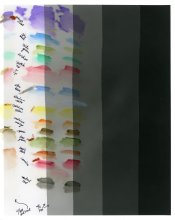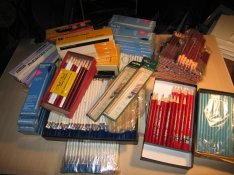bvy
Member
I'd like to get started with hand coloring. My issue are: One, I'm not particularly handy with pencil or brush (there's a reason I chose the camera). I did some cartooning in high school, so I can probably "color in the lines" -- but that's about it. Also, I don't see myself doing this very often (at first), so I don't want to make a big initial investment in media that's going to dry up or otherwise go bad. I was thinking colored pencils might be a good start. The paper I've chosen is Ilford MG Art 300, for it's classy appearance and toothy texture.
My searching hasn't turned up many examples of this combination (pencil + Art 300), so if someone has something to share along these lines, I'd be most interested to see it. I'm also interested in recommendations for media (perferably archival) -- if it's colored pencils or something else.
Thanks.
My searching hasn't turned up many examples of this combination (pencil + Art 300), so if someone has something to share along these lines, I'd be most interested to see it. I'm also interested in recommendations for media (perferably archival) -- if it's colored pencils or something else.
Thanks.










 I agree about being selective. One of the best coloured prints I ever saw was two London buses crossing a bridge over the Thames with only the buses in colour.
I agree about being selective. One of the best coloured prints I ever saw was two London buses crossing a bridge over the Thames with only the buses in colour. I just don't know exactly when, yet.
I just don't know exactly when, yet.

